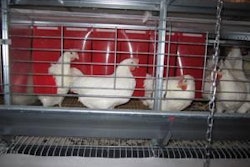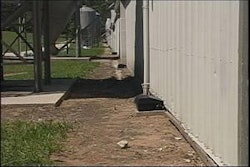
“We are very slowly recovering from the worst recession since WWII,” said Dr. Paul Aho, economist, Poultry Perspective. Speaking at USPOULTRY’s Grain Forecast and Economic Outlook Conference, Aho said that U.S. GDP growth has been anemic since the recession officially ended, and that the economy has not grown fast enough to reduce unemployment. Perhaps the most discouraging statistic has been the decline in inflation-adjusted median household income, which continued in 2010 and 2011, even though the economy is in “recovery.”
“We have had a weak economy, high unemployment, and corn prices have tripled,” Aho said. Total U.S. per capita red meat and poultry consumption is down by over 20 pounds through the recession and recovery, a decline of around 10%. Aho said that he had expected red meat consumption would decline during the recession, but he expected that poultry consumption would increase. Instead, U.S. per capita chicken consumption has fallen by 5 pounds from 2006 to 2011. In the same time frame, U.S. per capita egg consumption has declined from 258 to 246 eggs, according to American Egg Board data.
Prospects for recovery
Aho said that the number of home foreclosures is still a problem and is creating a drag on the overall economy. He said that it will take years before all of the foreclosures are completed and this inventory of unoccupied houses clears. Because of the high number of foreclosure properties on the market, new home starts are still running at 25% of the rate before the recession.
The negative impact of the mortgage crisis and high unemployment are being felt throughout the economy. The number of food stamp recipients has increased from around 26 million people before the recession to 45 million people today.
Because of a relative over-supply of chicken meat on the market in 2011, and historically high grain prices, “2011 was just awful for the entire year” for broiler producers, according to Aho. “Leg quarters have been the bright spot for the chicken industry,” he said. “The recession helped increase domestic demand for leg quarters, there was a lower supply of them and deboned thigh meat was equal in value to boneless breast meat.”
2012 forecast
Aho said we should see less beef, the same amount of pork, and less chicken meat production in 2012. He expects total animal protein production to be down by 5% by the end of 2012. With lower production levels we should see higher prices for meat in 2012. Aho expects leg quarters to be around $0.50 per pound, or perhaps as high as $0.55 per pound in 2012. He predicts that breast meat prices will get up to $1.50 at times, averaging around $1.40 per pound in 2012, and that chicken meat production in the U.S. will be profitable.
Aho said that in 2012 we can expect somewhat lower grain and energy prices, a slightly improved general economy, and better profitability for the poultry industry. There will be a slow increase in GDP growth to just over 2% by the end of 2012. The U.S. unemployment rate will slowly drop below 9% in 2012, and fall to 7% by 2014. U.S. per capita poultry consumption will pass red meat consumption in 2014.
Last year had the highest ever average oil price, around $95 per barrel in Texas, but he expects it to drop to around $75 per barrel by 2014 because of increasing supply.
In 2011 we had the highest ever average corn price, around $6.50 per bushel in Chicago. Aho predicts that corn will move towards an average of around $5 per bushel over the next two years as oil falls to around $75 per barrel.
Aho projects a very slight decline in U.S. egg production in 2012. “Egg production has remained remarkably constant throughout the recession, but returns have been all over the board, an amazing contrast between the stability of the production versus the instability of the returns,” he said. “I don’t know what it means, but it must mean something.”


















